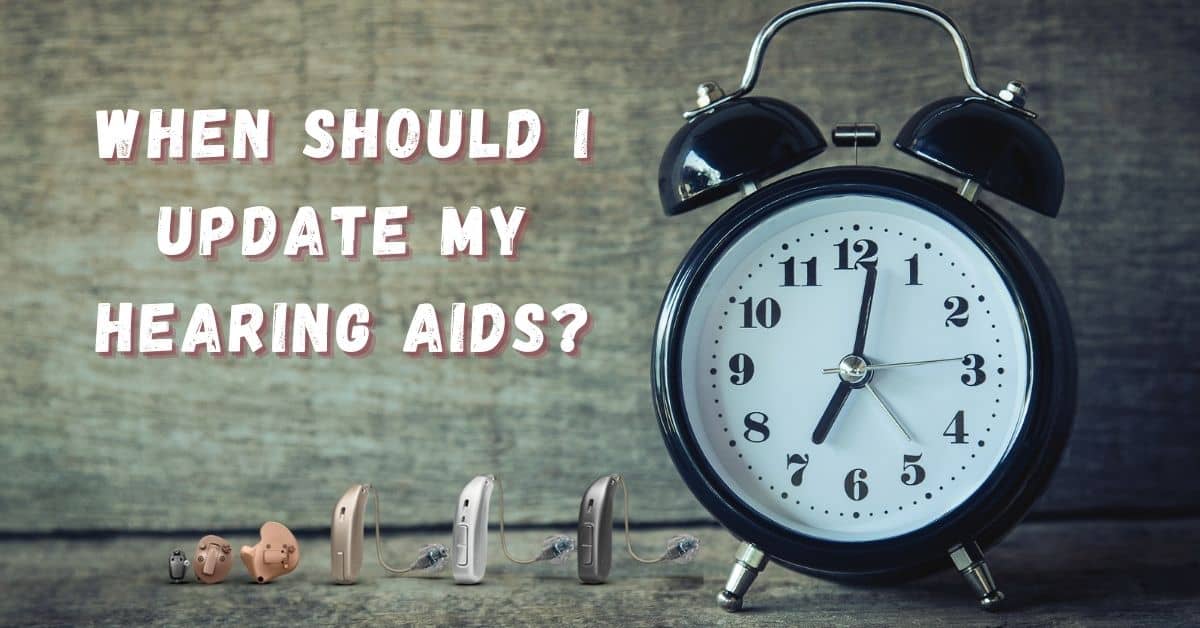
Hearing aids are an important treatment for those of us who suffer from hearing loss. They keep us more active and more engaged with the world around us, and that translates to better health and better well-being over time. But how do we know when our hearing aids are no longer doing the job we need from them? Much in the way that hearing loss can be difficult to notice in the first place, it can also be difficult to tell when our hearing aids need maintenance or replacement.
Are They Working Well?
Hearing aids, unlike other technologies we might rely on, take a beating. While their components are more sensitive to the elements than those in your smartphone, they are also more exposed to them! At least some portion of your hearing aids have to sit inside your ear canal, where moisture and earwax can become an issue. They are open to dust, dirt, smog and rain, and all of these things can negatively impact their ability to function properly.
Earwax and moisture in the ear canal vary greatly from person to person. Some people have drier earwax while others have wetter, stickier earwax. Some people sweat more than others, either naturally or because of lifestyle differences. Your hearing aids get a front-row seat to all of this, so it’s important to clean them regularly, and to remember that some people’s hearing aids might need more maintenance than others. While some might buy a set of hearing aids and never have an issue over the lifespan of the devices, others return to the hearing center on a regular basis to deal with issues related to earwax and moisture.
If earwax has built up in the smaller crevices of your hearing aids, a good cleaning or a replacement filter might be all they need to function like new. Small maintenance jobs like this, performed regularly, can significantly extend the life of a set of hearing aids. Sometimes corrosion can be an issue with speakers, microphones and other components. Depending on the age of the device, warranty status, and expense of the parts versus a new set of hearing aids, it may be worth replacing components rather than upgrading the hearing aids.
If you’re not sure whether your hearing aids are measuring up to their expected performance level, make an appointment for a “real ear” test, where the performance of your hearing aids will be measured as they function when actually in your ear. Any signal degradation at any point in the chain can be measured with this test, and maintenance or replacement may be recommended.
Are They Meeting Your Needs?
New technologies debut with regularity, and while some may be a huge help to you, others might not be that big of a deal compared to your current hearing aids. Think about the things you do and the things that are important to you. Are there regular moments in your life when you’re having issues with hearing despite having well-functioning hearing aids? If so, you might make a list of them. Talk to our team and see if these could be an issue with fitment or maintenance, or if there might be a newer model available that would do a better job for you.
Prescription Changes
It’s also important to remember that hearing loss is a degenerative condition, meaning it gets worse over time. If you got your hearing aids three years ago and feel like you’re having trouble hearing again, it might be because the hearing aids themselves are having issues, or because your hearing loss profile has changed. We can help you sort this out, so don’t hesitate to make an appointment when you notice changes in how well you’re hearing.
Insurance May Dictate the Timing of Upgrades
Insurance laws and Medicare/Medicaid practices vary from state to state, so be sure you’re familiar with your eligibility for an upgrade. Florida, for example, allows for one hearing aid every three years, where Idaho only allows for one in a lifetime. Private insurance practices may vary as well, so talk to your insurer about your options.
Remember that the Better Hearing Institute, a non-profit organization, recommends a hearing test once every decade until age 50, and once every three years after that. It’s important to keep up with these so you can maintain an understanding of changes in your prescription versus normal wear and tear of your hearing aids, as well as keeping track of your hearing loss’s progress.
Hearing loss can sometimes be an indicator of underlying cardiovascular issues, and there may be dietary and lifestyle changes you can implement to slow it down, so if you’re due for a hearing test, make an appointment today!
